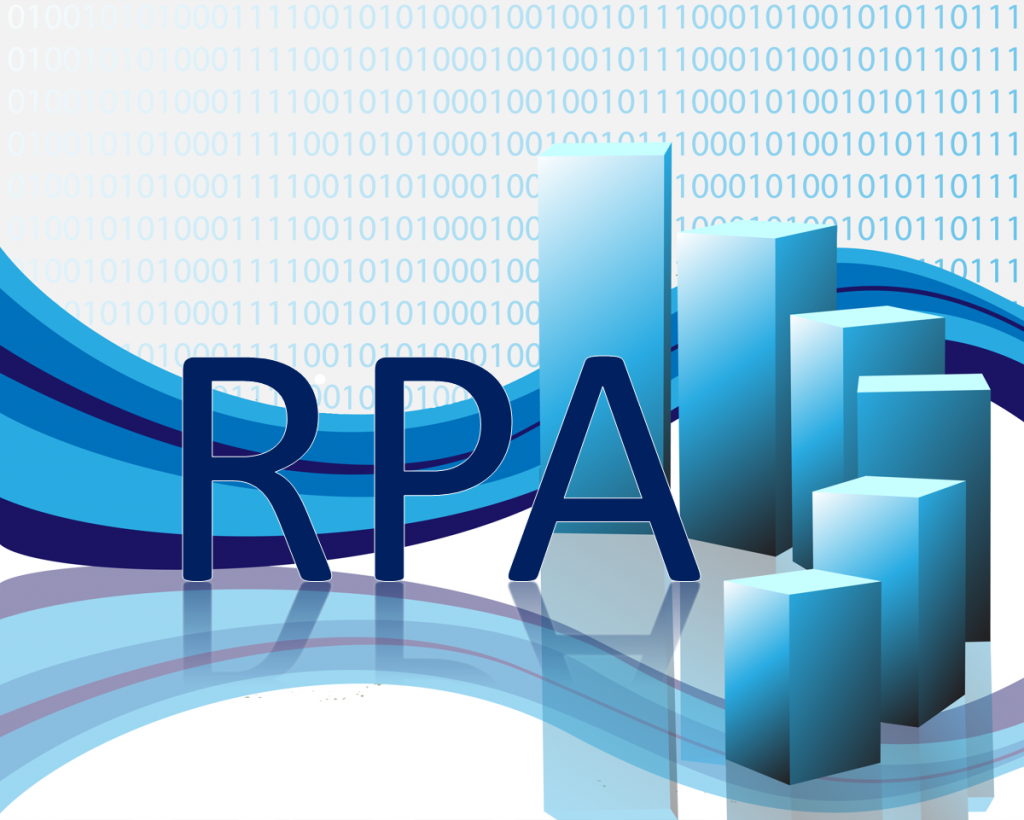Robotic Process Automation (RPA) has received a lot of media attention over the past several years. It has been demonized as the harbinger of mass unemployment and lauded as the gateway technology to the intelligent enterprise. Most analysts view RPA as a way to free employees from having to do repetitive, tedious tasks making them available to concentrate on more productive activities. Sarah Berkowski (@SarahBerkowski), Senior Director of Marketing at Nintex, and Thomas Kohlenbach, Principal Consultant at Promapp Solutions, explain, “With all the talk of how robotic process automation will revolutionize our working world, companies are feeling the pressure to figure out if and how RPA will work for them. Organizations of all sizes are investing in RPA to complete routine processes faster and at lower cost, hoping to free up human workers to focus on innovation and customer service.”[1] In the effort to figure out if and how RPA works for your company, make sure you don’t automate inefficient processes. Bill Gates (@BillGates) once noted, “The first rule of any technology used in a business is that automation applied to an efficient operation will magnify the efficiency. The second is that automation applied to an inefficient operation will magnify the inefficiency.”
Automate efficiency, not inefficiency
“Organizations are plugging real-world processes into the digital realm,” writes Roberto Torres (@TorresLuzardo). “Though software frequently delivers more efficiency, a net-positive outcome isn’t guaranteed.”[2] On the bright side, Torres discusses the case of New York Foundling, a 150-year-old child welfare agency, that faced a 42% turnover among clinician staff. According to Torres, “Departing staff pointed to the data entry tasks as their main reason for leaving.” Staff members were required to enter data in as many as five separate systems and, according to Torres, “Clinicians spent more time with computers than with the families they were tasked with serving.” The solution to this dilemma was robotic process automation and the agency expects to save 100,000 hours of repetitive work a year.
Although New York Foundling’s success is a terrific story, it didn’t come without some careful preparation. Torres notes, “Experts caution against plugging automation into processes that were inefficient at the outset. Software can go to waste without proper implementation.” Arik Hill, CIO of New York Foundling, told Torres, “Deploying the technology successfully started by identifying the bottlenecks, then infusing the technology in the organization’s process. Service excellence and stakeholder alignment were the goal.” Torres observes, “To get the most value out of RPA, organizations must first spend time and resources in the groundwork to identify which processes will be automated.” Amy Loomis, research director, Future of Work at IDC, told Torres, “In the best cases, [RPA] changes people’s sense of agency so they’re in a position to do more meaningful work. Automating something that doesn’t work well just makes it not work well faster.” Sara Castellanos (@SCastellWSJ) and Steven Norton (@steven_norton) write, “Software robots don’t need to take breaks, they don’t make mistakes, and they can do the boring work for human employees. But there are growing pains associated with deploying robotic process automation, analysts say. Finding the right opportunities to automate, defining the right level of automation for a set of tasks and finding the right talent to design and develop robots are among those challenges. … Companies are also failing to optimize processes or address data quality issues before introducing RPA to the workforce, and they’re underestimating the amount of time and resources required to deploy the robots.”[3]
Tips for successful RPA implementation
As Castellanos and Norton note, laying the groundwork for RPA implementation is critical for success. They assert, “Companies that have successfully deployed RPA are disciplined and methodical about identifying the right opportunities for software robots. They’re also good at planning and organizing their RPA programs.” Alison DeNisco Rayome (@AlisonDeNisco) provides three tips she believes leads to successful RPA implementation.[4] They are:
1. Select the right RPA opportunities. “When researching RPA,” Rayome writes, “companies should look to tasks that [require digital inputs, that use structured data, and follow clear logical rules]. One way to identify these suitable tasks is to deconstruct your back-office process.”
2. Plan the journey. According to Rayome, “Companies must build a roadmap to deliver the full value of RPA as they introduce and scale the technology. This will help to navigate areas that have proven challenging for others, including selecting the right tool for the specific use case, building realistic expectations in the organization for expected returns, and creating change management processes.”
3. Build an RPA team or center of excellence. Successful businesses focus on people, processes, and technology. This remains a fundamental truth with regards to RPA. Rayome explains, “As a company begins to extend its use of RPA, it should begin building a team to support process owners who are interested in introducing RPA into their own operations. … This team can take different forms, but should generally include people with skills in leadership, business analysis and design, and technical development.”
Berkowski and Kohlenbach suggest companies look for quick wins when implementing RPA; nevertheless, they suggest not rushing the implementation process. They explain, “Process automation is exciting, causing some companies to rush headlong into making changes to as many processes as they can, as quickly as they can. Introducing new technology this way can disrupt the smooth flow of products and data, causing business and supply chain interruptions and unsettling the workforce.”
Beyond RPA
As I noted at the beginning of this article, RPA is often referred to as a gateway technology for artificial intelligence. Greg Council, Vice President of Marketing and Product Management at Parascript, explains, “RPA is founded on an early example of expert systems. This form of AI simply entails encoding the knowledge of a subject-matter expert for a given task into a set of rules that a computer-based system can execute. As such, the more specific and well known the given task, the better RPA is at successfully automating it. But RPA software lacks built-in ‘intelligence’.”[5] The next step in that direction is what I call Cognitive Process Automation™ (CPA). Council explains adding machine learning to some RPA processes can have value. He explains, “Most ‘bots’ — a term that identifies a specific automation routine — only work against given rule sets in structured processes. They don’t adapt to new scenarios or learn from mistakes. This realm of AI is called ‘machine learning.’ The most mature (but still relatively new) RPA application of machine learning is the advance of ‘learn by example’ into the bot-configuration process, where a system can monitor — completely in the background — a given SME’s actions for different situations. This monitoring manifests itself as a ‘learned’ set of rules that can be implemented once complete, and it can be superior and more flexible than traditional rule-based approaches.”
Wayne Butterfield (@Waynaldo82), Director of Cognitive Automation and Innovation at ISG, believes the step beyond machine learning-enhanced RPA is intelligent automation.[6] He explains, “Intelligent automation technologies provide the following features”:
Image Recognition. “Image recognition … can review an invoice or confirm an identity via facial recognition.”
Natural Language Processing (NLP). “NLP … can understand the intent in a fixed body of text.”
Cognitive Reasoning. “Cognitive Reasoning … can make a complex decision based on various data points.”
Data Analysis and Extraction. “Data Analysis and Extraction … can find patterns in data sets or extract information from a contract or other legal document. When orchestrated correctly, intelligent automation technologies are enabling companies to automate processes that — until now — have been un-automatable.”
Cognitive platforms, like the Enterra Cognitive Core™, can provide many of these features. Not all processes require all features, which is why most analysts agree careful thought and consideration needs to go into the planning for every RPA or CPA implementation.
Footnotes
[1] Sarah Berkowski and Thomas Kohlenbach, “7 Ways Robotic Process Automation Can Succeed,” CMS Wire, 10 may 2018.
[2] Roberto Torres, “To succeed at RPA adoption, don’t automate inefficient processes,” CIO Dive, 5 February 2020.
[3] Sara Castellanos and Steven Norton, “Robotic Process Automation Efforts Suffer From Poor Planning: Study,” The Wall Street Journal, 22 March 2018.
[4] Alison DeNisco Rayome, “How to implement robotic process automation: 3 tips,” TechRepublic, 27 March 2018.
[5] Greg Council, “Injecting (Artificial) Intelligence into Robotic Process Automation,” Experfy, 2 May 2018.
[6] Wayne Butterfield, “Looking beyond RPA to intelligent automation,” Information Management, 13 August 2018.





